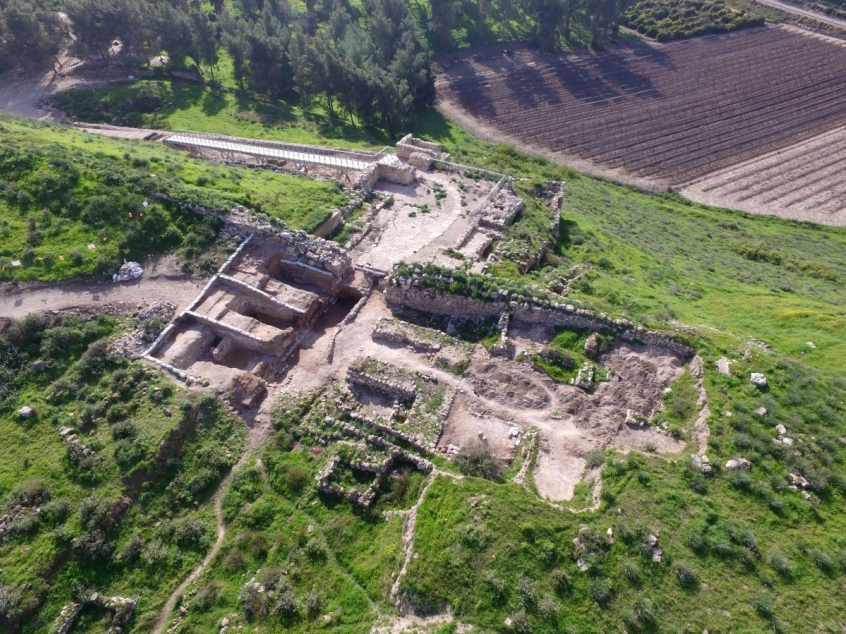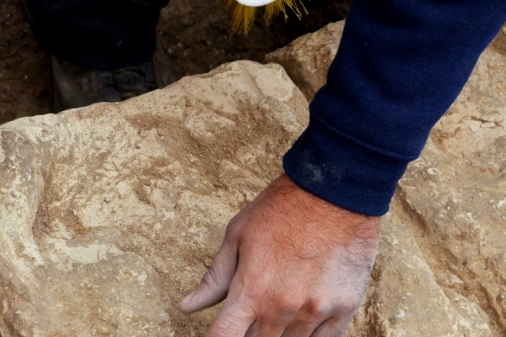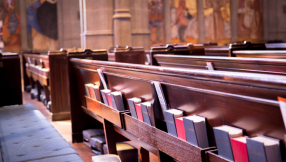
Archaeologists have proved that passages of the Bible about the triumph of Judaism over the pagan Ba'al worship are literally true.
Referring to the fight against paganism in the biblical city of Lachish, 2 Kings 10 says: "Then they demolished the pillar of Ba'al, and destroyed the temple of Ba'al, and made it a latrine to this day."
Excavations in Israel have for the first time discovered an actual physical toilet of the kind referred to in this passage.
The stone latrine was deliberately inserted into a Ba'al shrine to render it unclean, and therefore unusable as a shrine any more.

This and other artifacts that back Biblical accounts in Kings were found in archaeological excavations in Tel Lachish National Park.
Archaeologist were investigating the gate-shrine from the First Temple period, dating from the eighth century BC.
According to the Bible, city gates were where "everything took place".
Elders, judges, governors, kings and officials would sit on benches at the city gate to rule the city and keep an eye on comings and goings.
These very benches were found in the excavation at Tel Lachish, once the second most important city in the Holy Land after Jerusalem.
Israel Antiquities Authority (IAA) investigated the southern three chambers of the gate. The northern chambers had been excavated decades earlier by a British expedition.
One of the three southern chambers turned out to be a shrine to the pagan deity Ba'al.
Sa'ar Ganor, excavation director for the IAA, told Christian Today: "What is so important about the gate is that it is the place where everything took place – administrative and cultic activities."
The discoveries at the gate matched perfectly with an account of activites at the gate described in Kings during the reign of King Hezekiah.
"It means we have the evidence. The Bible and the archaeology are matching," Ganor said.

The archaeologists found the remains of the stone altar to Ba'al, and the holes left in the altar when the horns of the deity were removed and the altar smashed – exactly as described in the Bible.
Ze'ev Elkin, minister of Jerusalem and Heritage, said: "The fascinating new discovery at Tel Lachish is a typical example whereby excavations and further research of heritage sites show us time and time again how Biblical tales that are known to us become historical and archaeological stories."
He said the discovery is physical evidence of events that took place during the 29-year reign of King Hezekiah: "He removed the high places, smashed the sacred stones and cut down the Asherah poles..." (II Kings 18:4).
Elkin added: "Before our very eyes these new finds become the biblical verses themselves and speak in their voice."
He said it was an "enthralling experience of ancient stones that speak to us of the Bible in their own unique voice."
Miri Regev of Israel's culture ministry said: "The uncovering of these finds joins a long list of discoveries that enlighten us about our historic past, a past that is manifested in our country's soil and in the writings of the Book of Books.
"The Bible – the founding book of the Jewish people, draws the country's boundaries and the heritage of the Jewish people that was exiled from its country and returned to its homeland. It boldly commemorates the way of our forefathers, the prophets, the kings, and the judges, and the Israel Antiquities Authority deserves praise for this important discovery, a discovery that deepens our connection to our ancestors who walked this land."
After the toilet was placed in the shrine, it was sealed and finally the gate was destroyed by Sennacherib, king of Assyria, in 701 BCE as described in II Kings 18 and II Chronicles 32.













